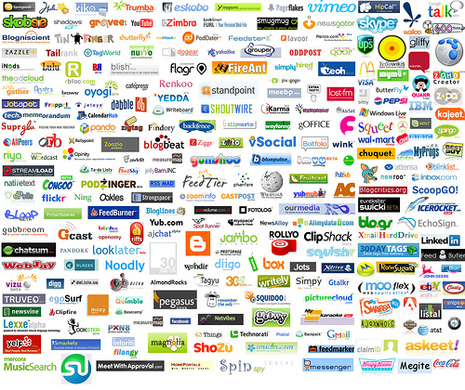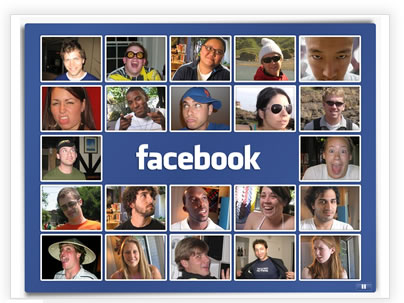Without a doubt Social Media is a really important element of modern life. Individuals use it to connect with friends, old acquaintances and even celebrities. Organisations of all sizes are using the likes of Facebook to make contact with their customers. This doesn’t appear to change, if anything Social Media is likely to play an increasingly prominent role, especially now that Google states it will use buzz as an influence in its ranking.
When I speak to friends who work in a B2B environment they often ask what can they use it for. I am also asked the same question when I speak at conferences.
Despite the repeated questions on how should B2B organisations adopt Social Media a Bizreport study outlined some interesting and surprising statistics. 86% of B2B firms already have an active Social Media presence compared to only 82% of B2C companies. However the same report suggests that those B2B firms aren’t making the most of their presence with 32% engaging with their base on a daily basis, compared to 52% of B2C companies. This is backed up by the fact that 34% of B2B companies aren’t tracking their activity in any way either.
Gut instinct is the same as if I was in a B2C environment. Use the channels in the way they should be used and create approaches that are right and targeted to your audience. The key thing I would advise anybody to do first however is understand why your business should be in Social Media and what is your aim of being there? Can you offer the audience something they can’t get elsewhere or provide them with a point of view they don’t easily get.
Once you have defined your sense of being (in Social Media terms) you should integrate it into both your overall business processes and your overall Marketing strategy. The reason for doing this is to ensure it becomes a part of your everyday activity in your business, automatically enabling you to avoid the pitfall of engaging in the stats in the report.
Perhaps more importantly in B2B than in B2C you really need to define what each channel will be used for. That being said this is still an important factor in B2C however there is also more of an overlap of channels for B2C. Remember, just because all the buzz and scale is with the likes of Twitter, Facebook and YouTube you may decide that one or all of these channels are not suitable for your business.
A key part to any social media strategy is the reason for being. Offer your customers something to engage with, provide a currency that will ensure they want to engage with your company. This will be different depending who your business is, what it does and your position in your sector and with your customers.
For example, if you are perceived as an expert in your field then your strategy will be completely different to if you are purely a distributor of kit. We need to take one step back to the start of that sentence, the key part is how you are perceived by your customers, not how you perceive yourself. You don’t need to undertake expensive brand studies just generally ask your customers some new questions, unless you already know the answers.
Obviously in a B2B environment customers are often as concerned by the commercial aspect so if you are in a position to offer something unique for those that engage with you via social media (voucher codes or free services) that could provide a boost to your numbers, however that alone will not necessarily help you achieve your goals unless its a continued programme of activity that provides real additional value.
The whole ethos of being an expert provides real social media gold. What can you give to your customers that will help interaction and engagement. A great example is to provide content they wouldn’t get elsewhere. A builders merchant could provide HowTo guides for builders on ways to save money and time on specific projects such as building a conservatory.
A distributor of electrical components could provide a service to the end user but as an aid for their B2B customers. The distributor could provide a mash-up of the UK map which is fully searchable and links to electricians in their area, with examples of their work and testimonials. The distributor in theory could also create income from charging electricians to appear on their platform if scale was achieved.
IT training companies could really demonstrate their expertise by providing a community and forum on their own website where their trainers can answer delegates questions on site and in theory offer clinics at agreed dates to really give in-depth support to their delegates. This would really add ongoing value to delegates and support them and their employers further in to the lifecycle.
These were just some basic ideas that could be adopted and across a number of sectors. If you are in a B2B environment, feel free to make contact and I can see if I can devise something specific for you. Also check out this B2B Social Media infographic




 ma campaign perfectly illustrates. The campaign lived within social media, utilising strengths of various platforms such as Twitter and Facebook, however substantial investment was made in traditional channels to support this activity.
ma campaign perfectly illustrates. The campaign lived within social media, utilising strengths of various platforms such as Twitter and Facebook, however substantial investment was made in traditional channels to support this activity. the chance of fame as part of your social media strategy, no matter how small, their is a greater chance of success. As with the familiarity section, the accolade has to be in tune with your audience. There is no point providing the platform to be an Exhibitor in the Tate to a group of stereotypical football fans. Neither would a DJ contest be of any interest to a group of traditional
the chance of fame as part of your social media strategy, no matter how small, their is a greater chance of success. As with the familiarity section, the accolade has to be in tune with your audience. There is no point providing the platform to be an Exhibitor in the Tate to a group of stereotypical football fans. Neither would a DJ contest be of any interest to a group of traditional 


